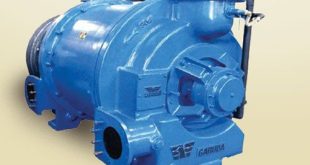roots blower pump
A Roots blower pump, also known as a Roots blower, is a type of positive displacement pump that utilizes rotating lobes to move a fluid. It’s essentially a rotary lobe pump, often used for moving air or gas, and sometimes for creating a vacuum.
-
Positive Displacement:
Roots blowers trap and move a fixed volume of fluid with each rotation of the lobes.
-
Rotating Lobes:
The pump features two or more rotating lobes that intermesh to trap and move the fluid.
-
No Internal Compression:
Roots blowers don’t have internal compression; they move the fluid without compressing it within the pump itself.
-
Applications:
They are used in various applications, including wastewater treatment (aeration), pneumatic conveying, and as vacuum pumps.
-
Vacuum Pumping:
When used as a vacuum pump, they create a pressure differential to evacuate air or gas.
-
Combination with other pumps:
Roots blowers are often combined with other vacuum pumps (like rotary vane pumps) to achieve higher vacuum levels,
- Fluid enters the pump’s intake.
- Rotating lobes trap the fluid in pockets between the lobes and the casing.
- The lobes carry the fluid to the outlet.
- At the outlet, the fluid is discharged.
- Sewage Treatment: Roots blowers are used for aeration in sewage treatment plants, facilitating the breakdown of organic waste.
- Pneumatic Conveying: They move materials through pipelines in various industrial processes.
- Vacuum Systems: In vacuum applications, they help achieve lower pressure levels.
- Other uses: They can also be used for filter flushing, backwashing, and gas recovery.
